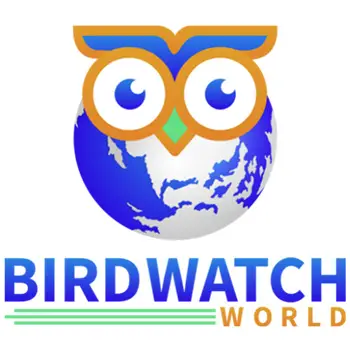9 Yellow Birds Of Australia Introduction
There are many yellow birds that call Australia home. Depending on where you are on the continent, you may find birds with a lot of yellow on them or just a little. I have spent years studying birds and for this article, I dug deep into all of my resources to find the yellow birds of Australia.
There are more yellow birds in Australia than just the ten below. I will cover those in another article.
1. Budgerigar (Budgie)
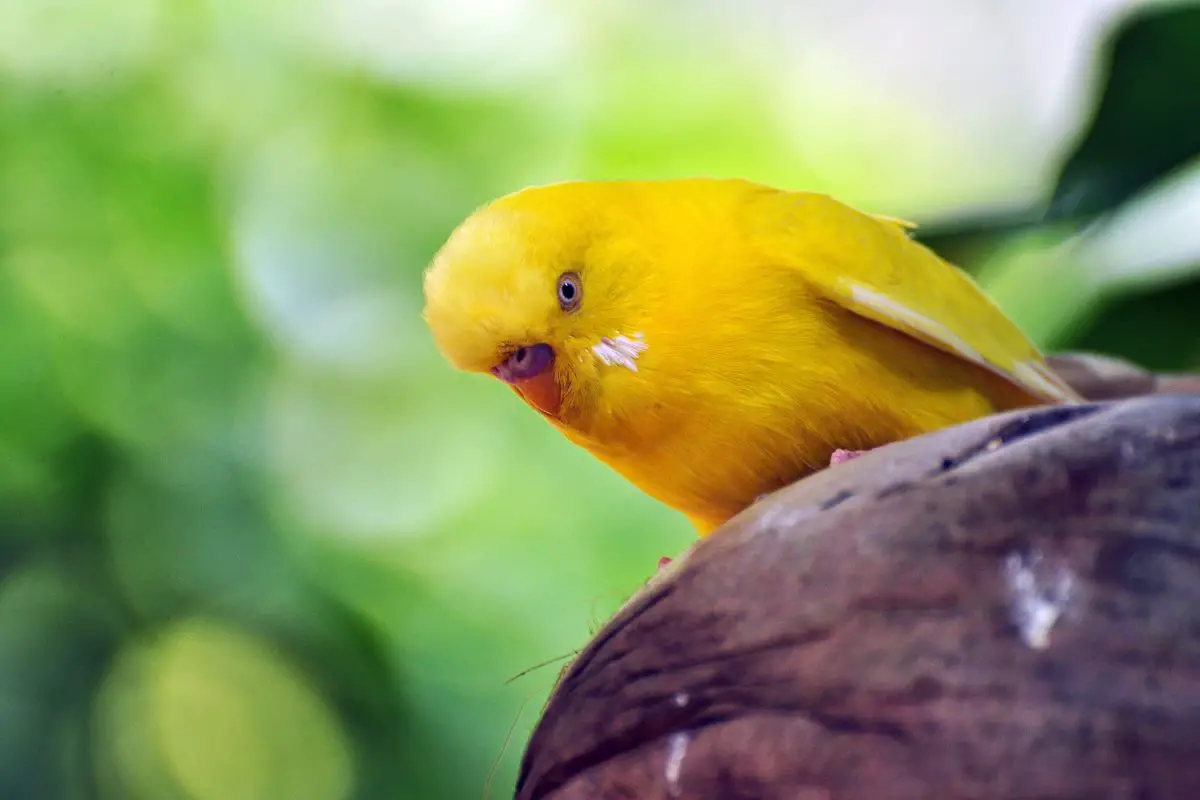
Size
The Budgerigar is on average around 18 cm (7 in.) long.
Colour
The Budgerigar comes in a lot of different colours. Wild budgies however are only ever yellow and green. All the other colour variations are in birds bred in captivity.
As you can see from the images above and below, budgerigars have yellow heads and faces. They also have yellow and black stripes running down the back of their heads and also on their wings.
Try this post here on the blog for 17 Australian bird names that will make you laugh
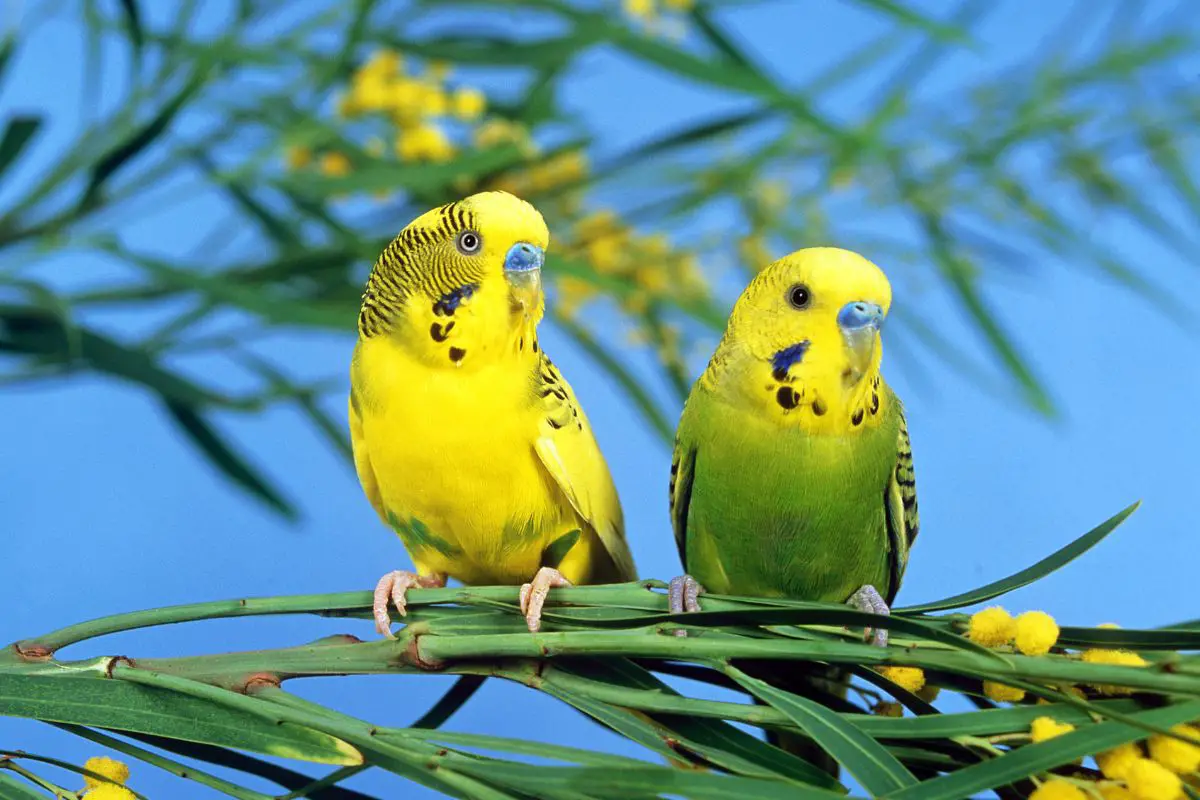
In the image above you can see two budgies, one that is the normal yellow and green, and one that is yellow all over. This image was stated as being taken in the wild though it looks to me like it might have been taken in a studio. Either way, this is a photo of a mostly yellow budgerigar and I’m sure that colour anomalies like this do occur from time to time.
Other Names
The Budgerigar is affectionately known as the Budgie and also the Parakeet in American English. Their Latin name is Melopsittacus undulatus.
Where To Find Them
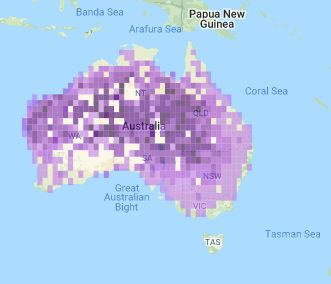
You will find budgerigars throughout much of mainland Australia. They are not present in the far southwest, the northern parts of the Northern Territory, Tasmania, and most of the east coast.
Where To Look For Them
Budgies can be found feeding on seeds on the ground or flocking around waterholes or tanks with other seed-eaters such as pigeons, finches, or parrots.
They make daily visits to waterholes and in fact, early explorers would follow flocks of budgerigars as they knew they would lead them to water.
What Do They Sound Like?
The recording below from Marc Anderson is a great example of the call of the Budgerigar:
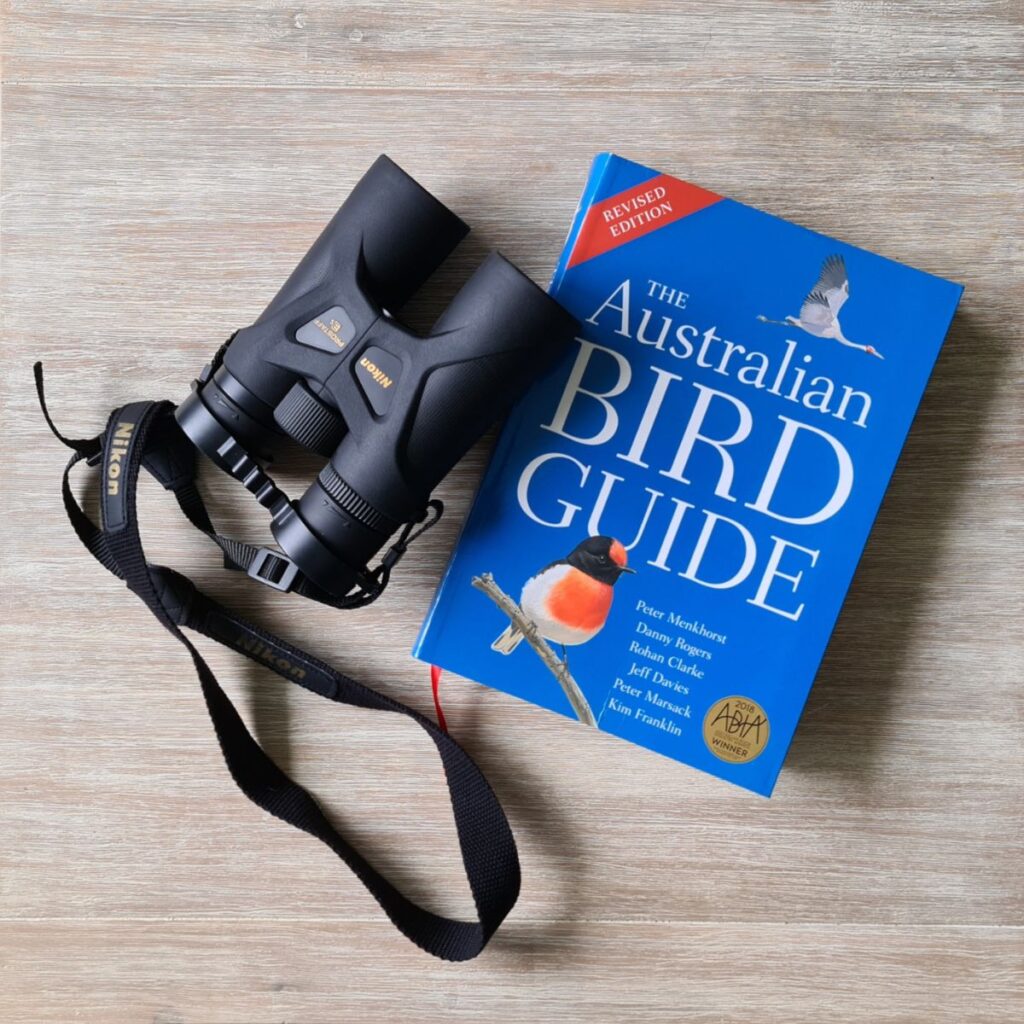
Learn more about these and other Australian birds in the Australian Bird Guide. Check the latest pricing from Amazon, Walmart, or eBay.
2. Crested Shrike-tit
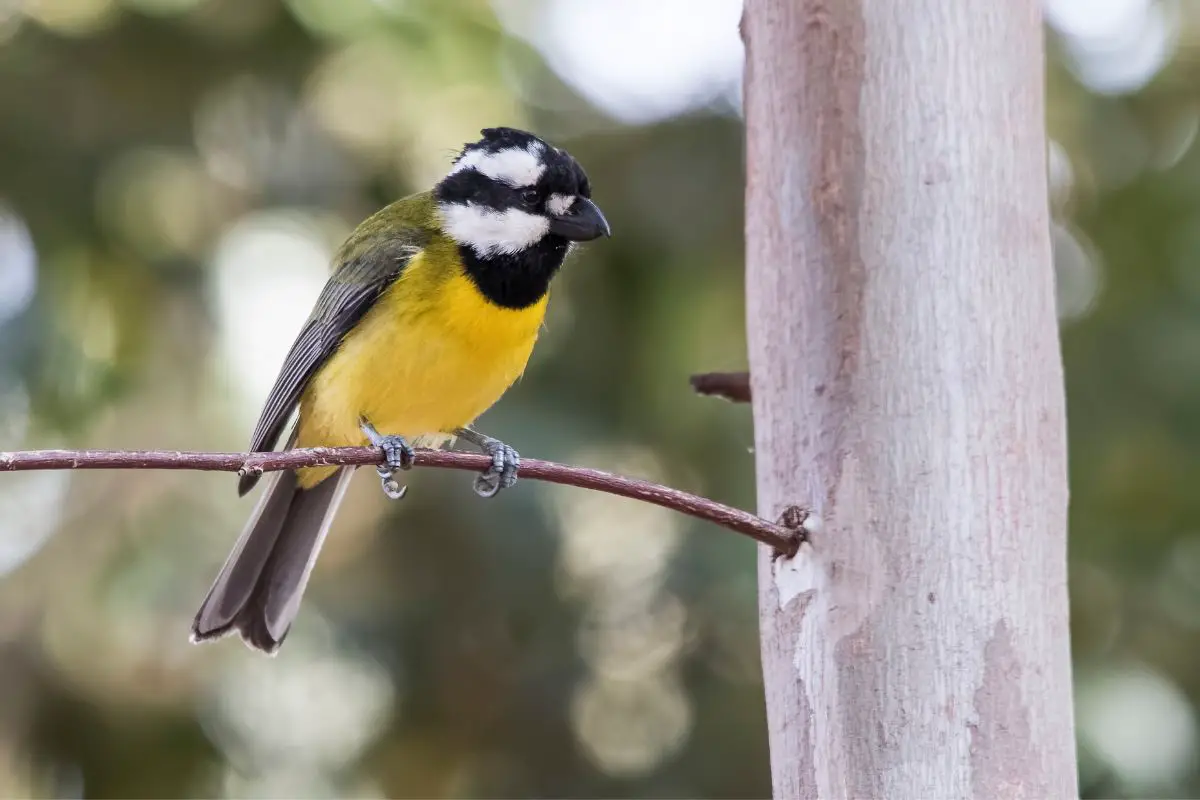
Size
This beautiful bird is about the same size as a Budgerigar at around 17 cm (6.7 in.) long.
Colour
The Crested Shrike-tit has a stunning yellow chest, belly, and rump. Their standout feature is probably their black and white striped head and the Mohawk hairstyle (or feather-style).
There are three subspecies of this bird: the Eastern, Western, and Northern. Male birds of the eastern variety have an olive-green back and rump and grey wings and tails. The western males have whiter bellies, paler wings, and are yellow under their tails. The northern males are yellower overall.
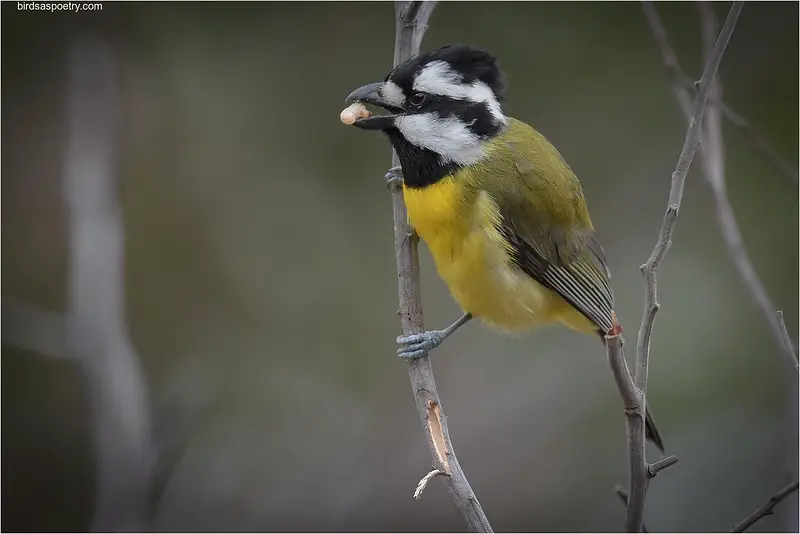
Other Names
These birds are often called the Australian Shrike-tit. Their Latin name is Falcunculus frontatus.
Where To Find Them
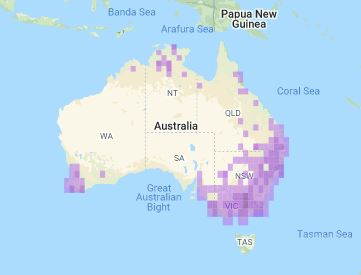
Eastern Shrike-tits are found along the east coast from the Atherton region in Queensland to the southeast of South Australia. The western species can be found in the southwest corner of Western Australia. Northern Shrike-tits are endangered and can be found in the top end of the Northern Territory.
Where To Look For Them
Look to the trees for these birds, they are rarely found on the ground. They forage alone, in pairs, or sometimes in groups of up to five birds. You may see them tearing at the bark of trees to get at the insects beneath.
What Do They Sound Like?
Listen to the mournful call of the Crested Shrike-tit below:
Find out all about Australia’s smallest bird in this article right here on Birdwatch World
3. Eastern Yellow Robin
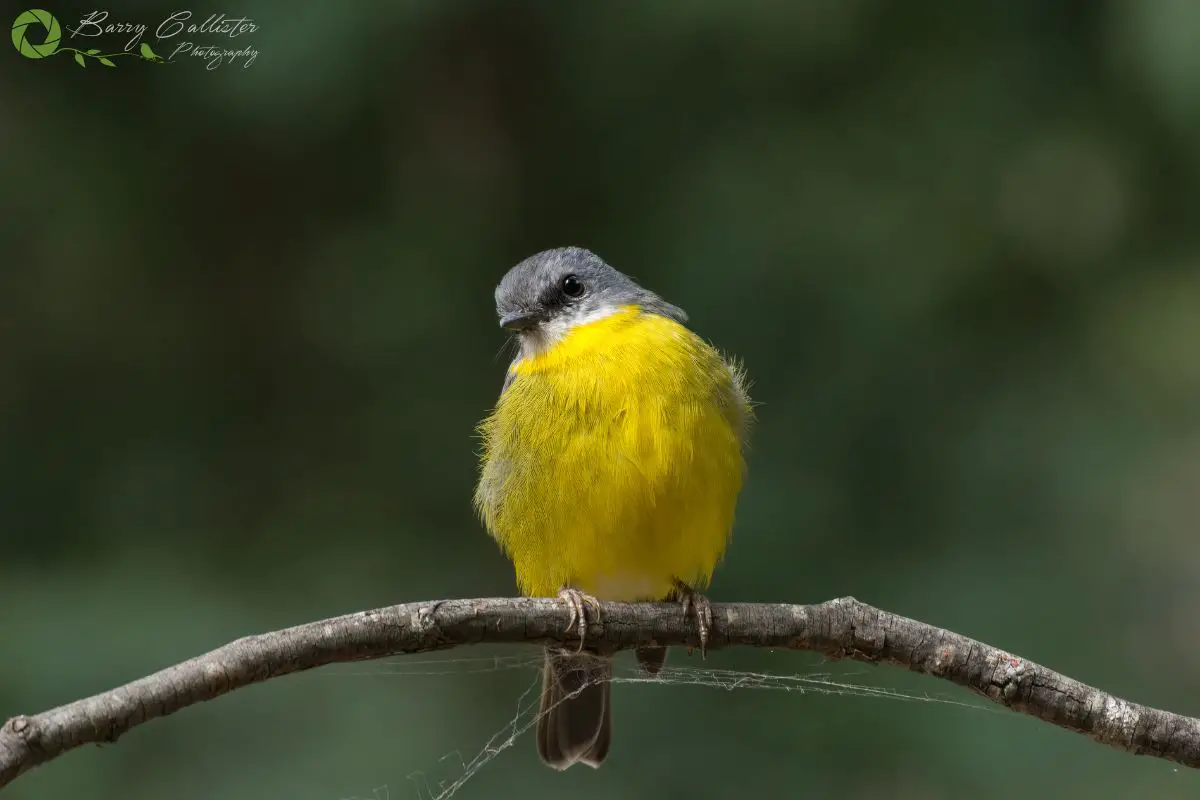
Size
Eastern Yellow Robins are around 15 to 16 cm (5.9 to 6.3 in.) long.
Colour
The beautiful yellow breast and belly of these birds is their defining feature. Their heads and backs are grey. They also have an off-white patch under their beaks.
Birds in the north will be brighter yellow whereas southern birds have an olive-yellow rump.
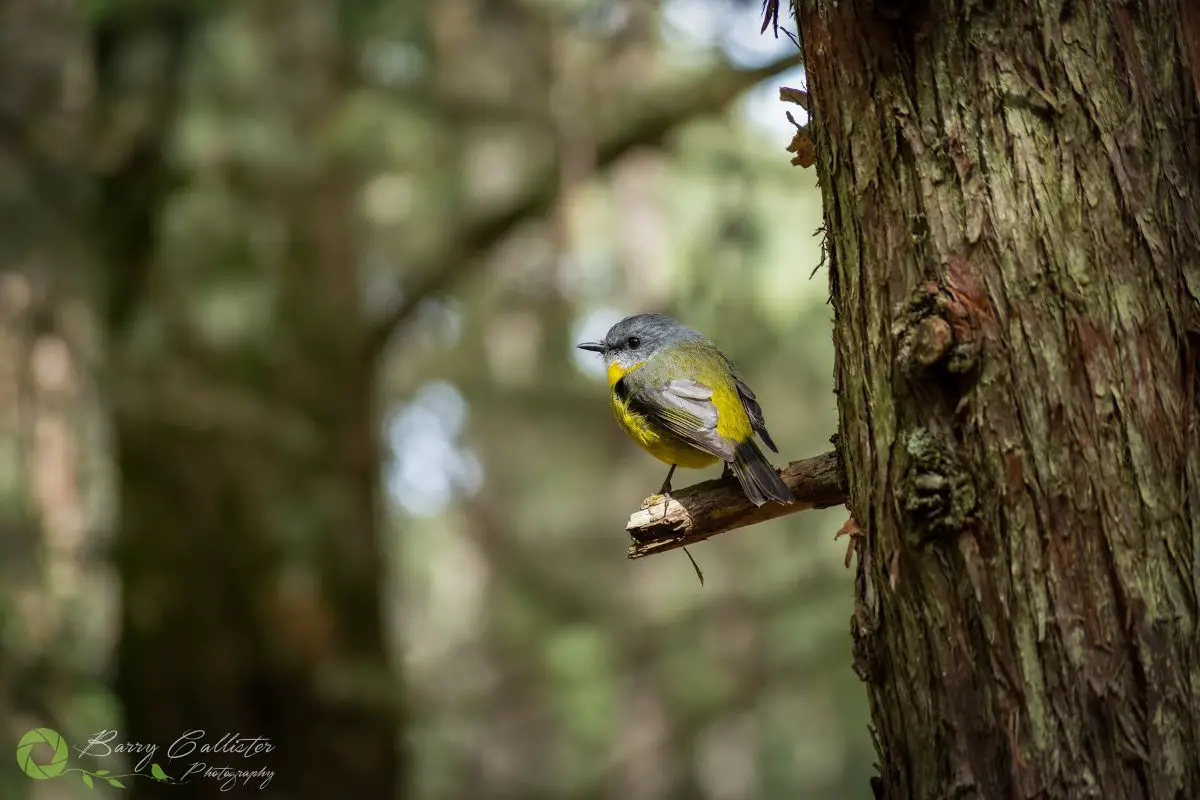
Other Names
The Eastern Yellow Robin is not really known by any other names. Its Latin name is Eopsaltria australis.
Where To Find Them
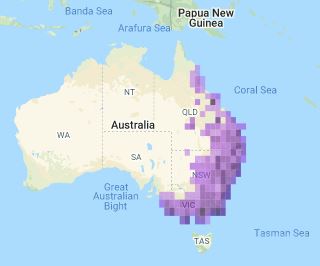
You will find these amazing little birds on the east coast and across into South Australia.
Where To Look For Them
Eastern Yellow Robins like a range of different habitats from dry woodlands to rainforests. Look for them on the ground catching insects in the leaf litter, or gripping to the side of a tree trunk.
What Do They Sound Like?
The call of the Eastern Yellow Robin is kind of like a radar blip, hear it below:
The Eastern Yellow Robin also appears in my 10 Cute Australian Birds article here on Birdwatch World
4. Golden Whistler
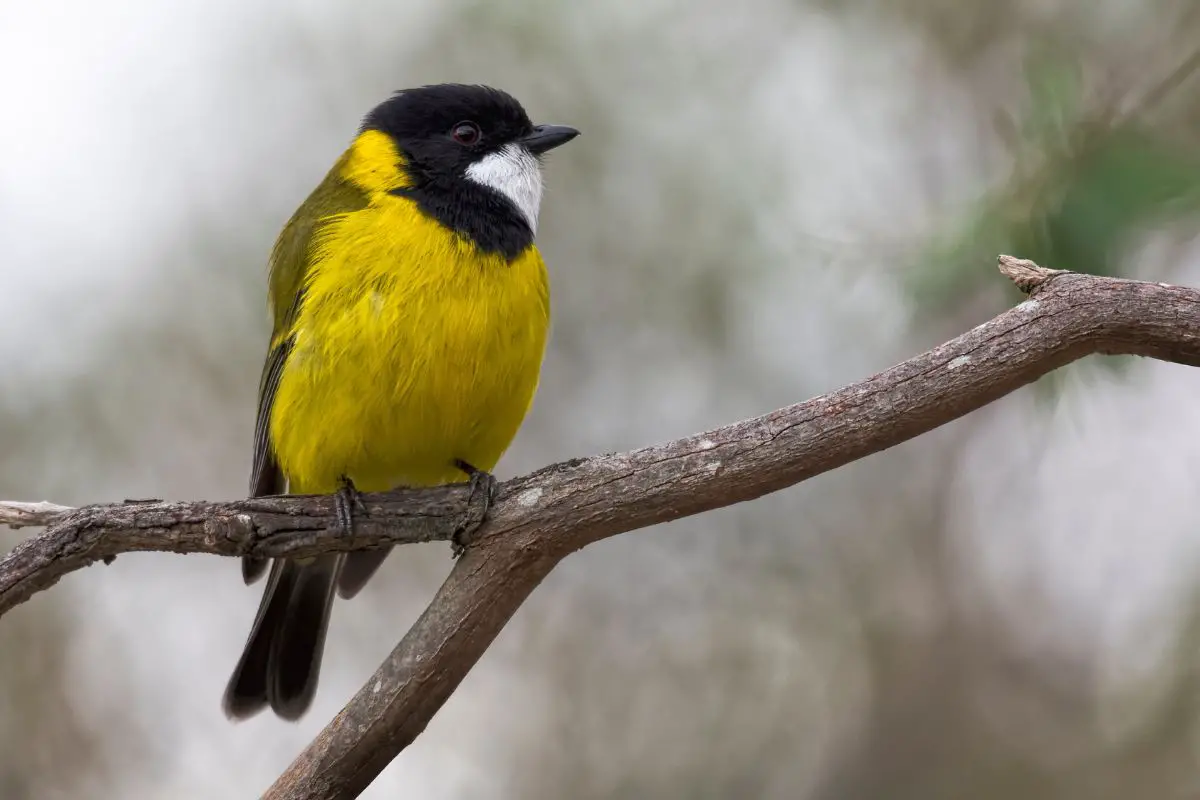
Size
Golden Whistlers are generally around 16-19 cm (6.3-7.5 in.) long.
Colour
These birds have a bright yellow chest, belly, and rump similar to the Eastern Yellow Robin. The yellow plumage extends up the side and around the back of their heads. They are black on the top of their heads and down to the top of their chests.
There is a bright white patch beneath the beak and they are olive green on their backs and wings.
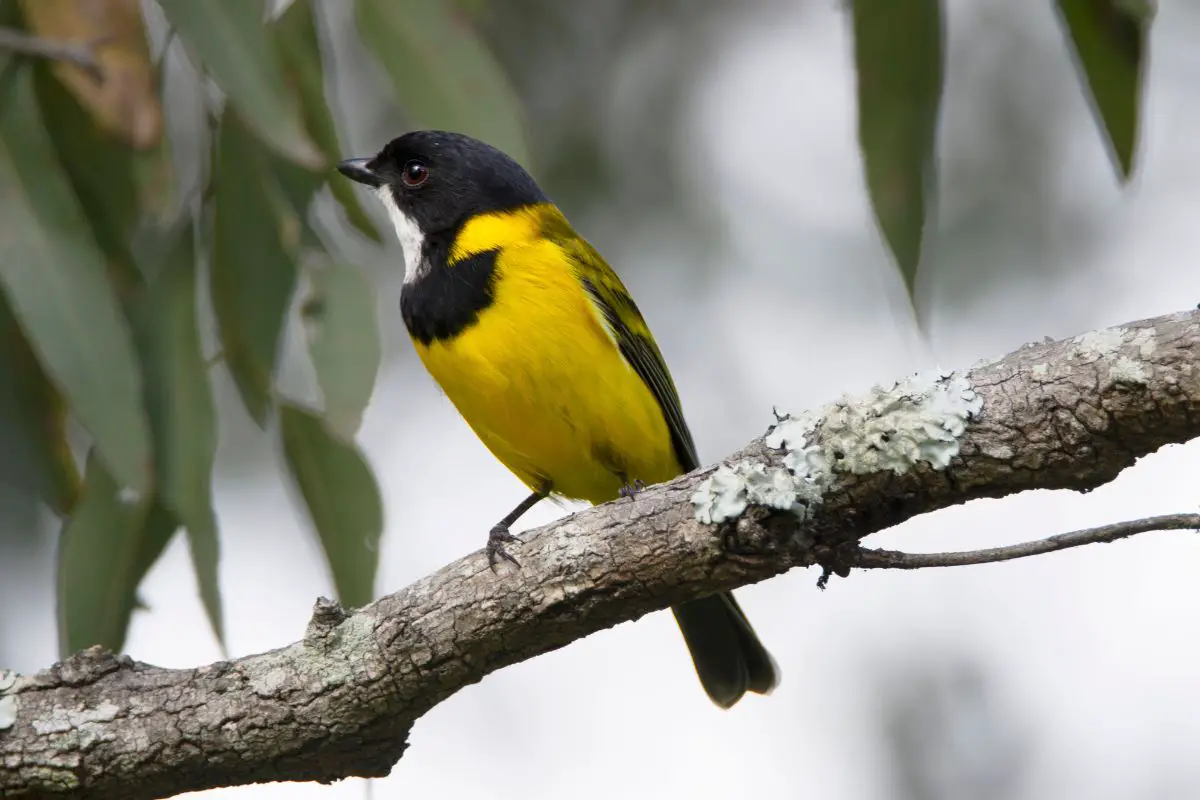
Other Names
The Golden Whistler is also known as the Australia Golden Whistler. Its Latin name is Pachycephala pectoralis.
Where To Find Them
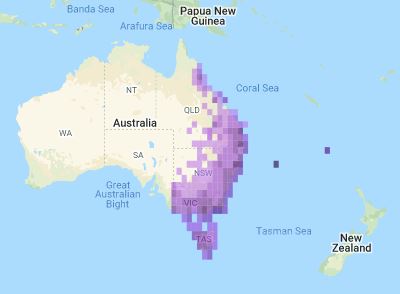
The Golden Whistler can be found in the east of Australia from northern Queensland down to Tasmania.
Where To Look For Them
Look for Golden Whistlers picking insects from the lower to middle tree level. They will usually feed alone.
What Do They Sound Like?
Hear the call of the Australian Golden Whistler echoing through the Tasmanian bushland:
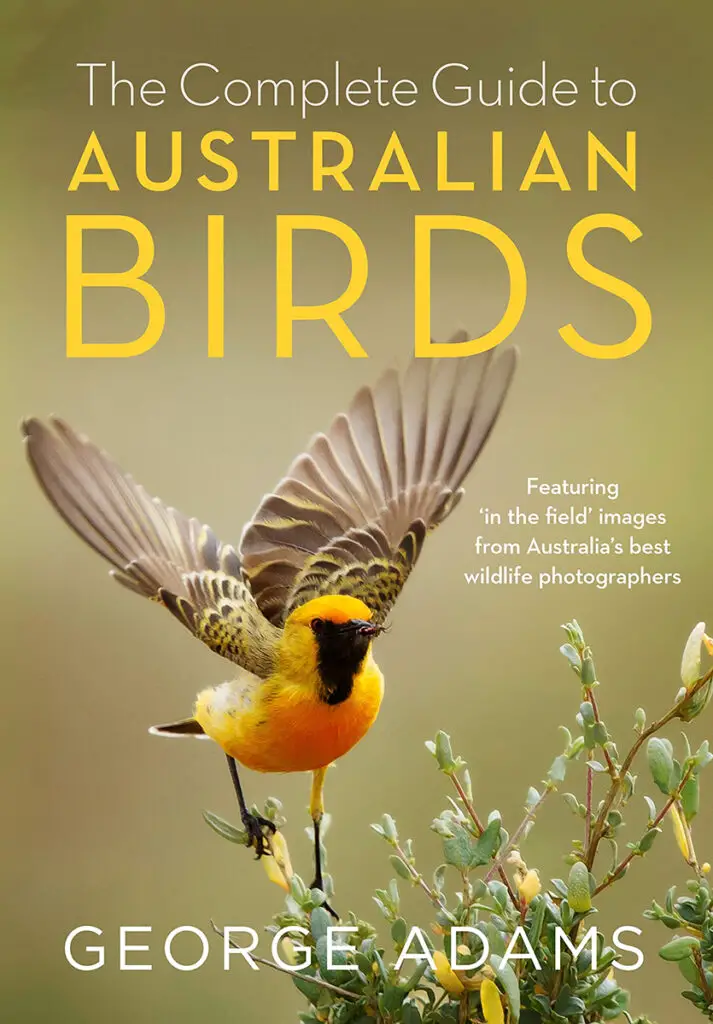
Another fabulous guide to Australian birds that I recommend is The Complete Guide To Australian Birds. Packed with beautiful images and useful information. Check the latest prices from Amazon and eBay.
5. Olive-Backed Sunbird
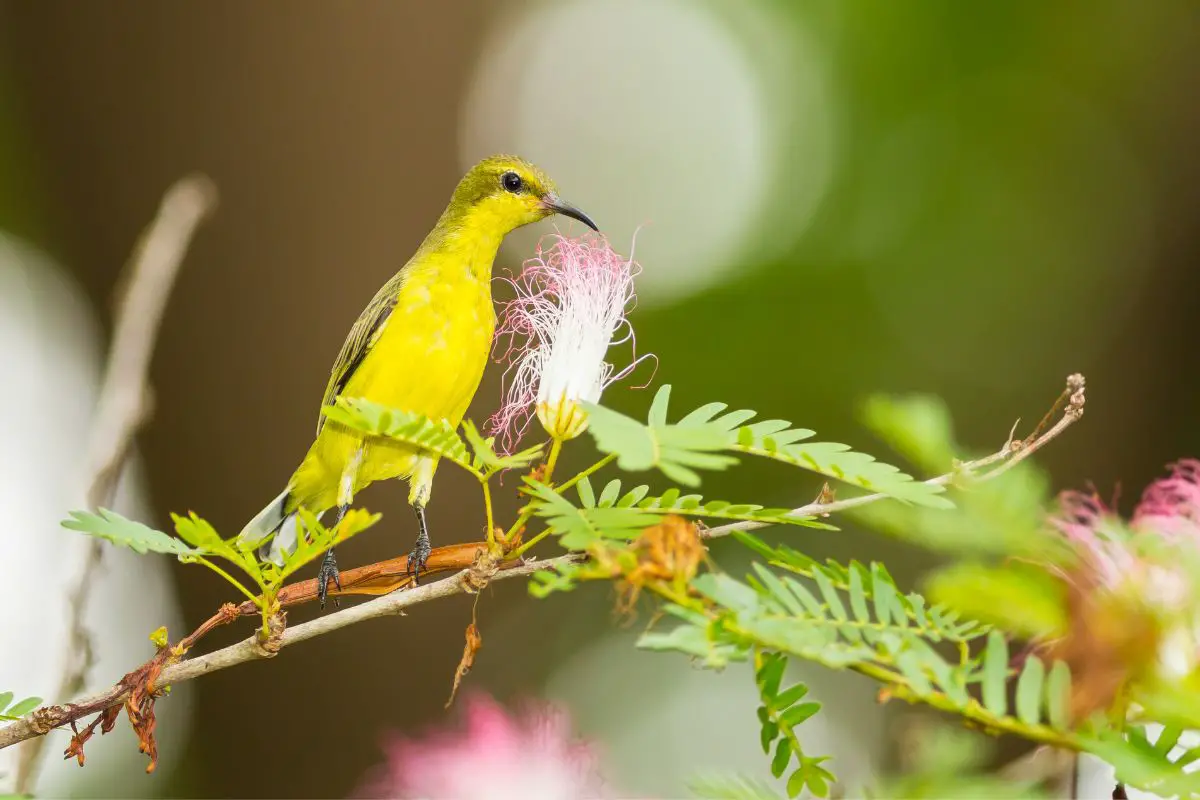
Size
These are small birds growing up to just 12 cm (4.7 in.) in length.
Colour
How could a bird with the name Olive-backed Sunbird be anything but yellow?! Well, of course, they are also a yellowish-olive colour on the top and sides of the head and have a brown back and wings. The image above is a female, males are different in their colouration.
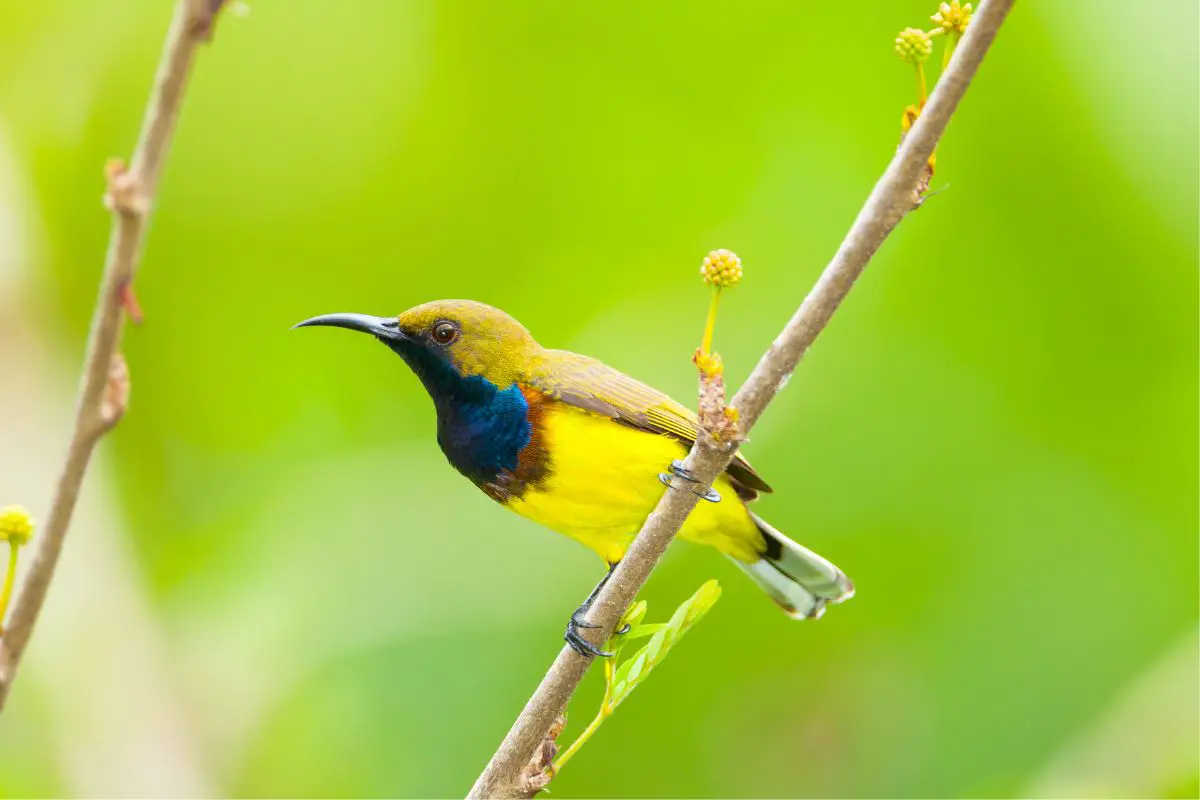
As you can see above, the male Olive-backed Sunbird is also yellow on the belly and rump but has an iridescent dark-blue or dark-violet forget (area under the chin down to the top of the breast). They are also yellowish-olive on their heads and have brown wings and a black tail with a white tip.
Other Names
You may hear people calling these Yellow-bellied Sunbirds. Their Latin name is Cinnyris jugularis.
Where To Find Them
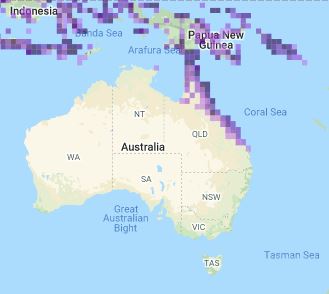
The Olive-backed Sunbird can be found in much of coastal Queensland, more in the north than further south. They are rarely found more than 25 km (15.5 miles) inland.
Where To Look For Them
Olive-backed Sunbirds are nectar-eaters so you will find them flying about tropical gardens, as well as in woodlands, and on the edges of mangroves or rainforests.
What Do They Sound Like?
Listen to one of the calls of the Olive-backed Sunbird below:
6. Pale-yellow Robin
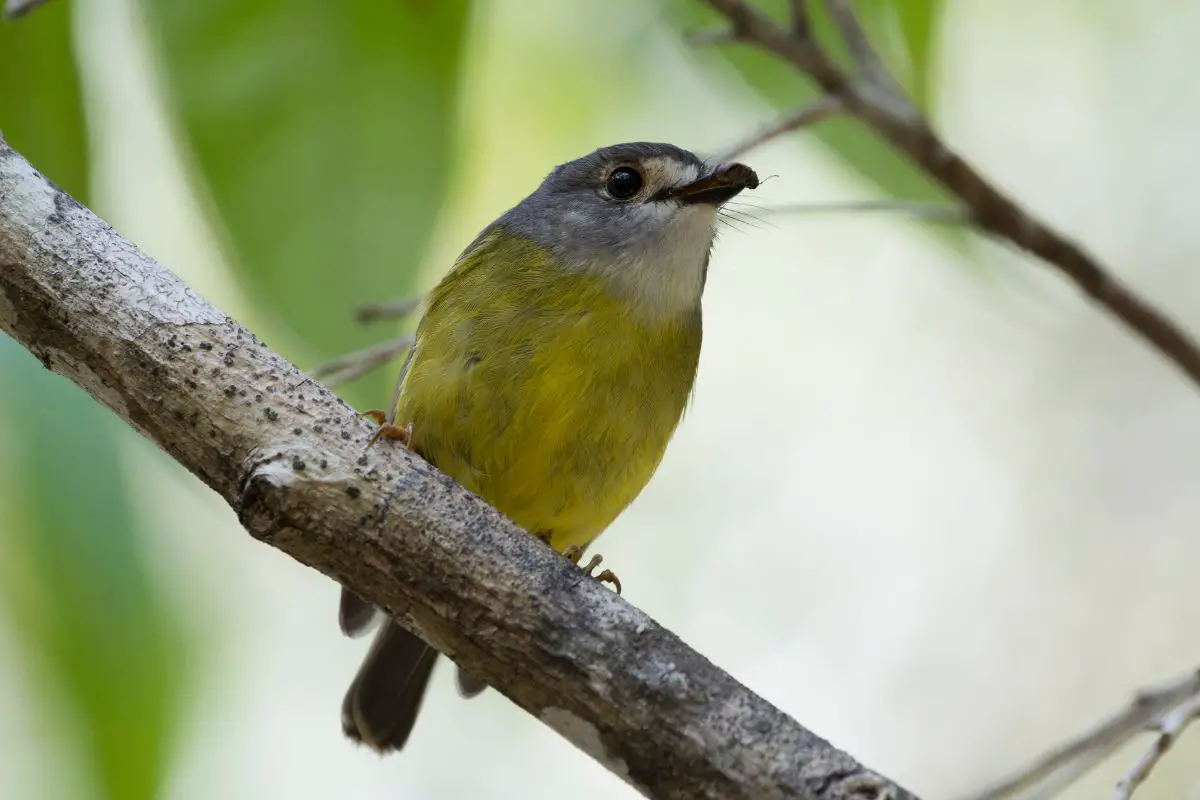
Size
The Pale-yellow Robin measures 12-13.5 cm (4.7-5.3 in.) in length.
Colour
These birds are similar to the Eastern Yellow Robin, only paler. They are grey on the head and the side of the face with an off-white patch above and below the beak. Their backs are olive green and their wings and tail are brownish.
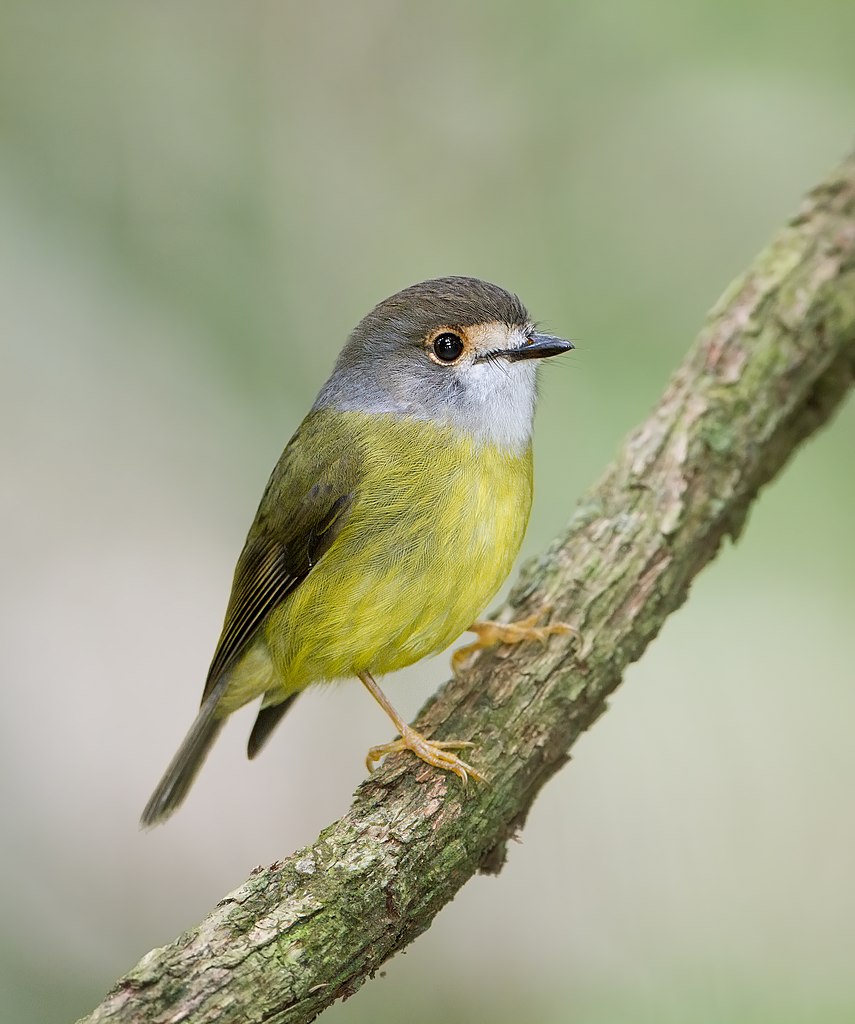
Other Names
Known by many names including Buff-faced, Large-headed, and Pale or Rufous-lored Robin. Their Latin name is Tregellasia capito.
Where To Find Them
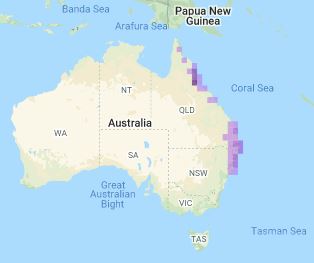
Pale-yellow Robins are found on the east coast of Australia from the upper Hunter Region in NSW to just north of the Tropic Of Capricorn. You’ll also find them in the north of Queensland from Townsville to Cooktown.
Where To Look For Them
You will find these little guys on the ground hunting for insects. They may also be hanging out in the middle levels of the trees.
What Do They Sound Like?
Though similar in appearance to the Eastern Yellow Robin, these birds sound very different:
7. Regent Honeyeater
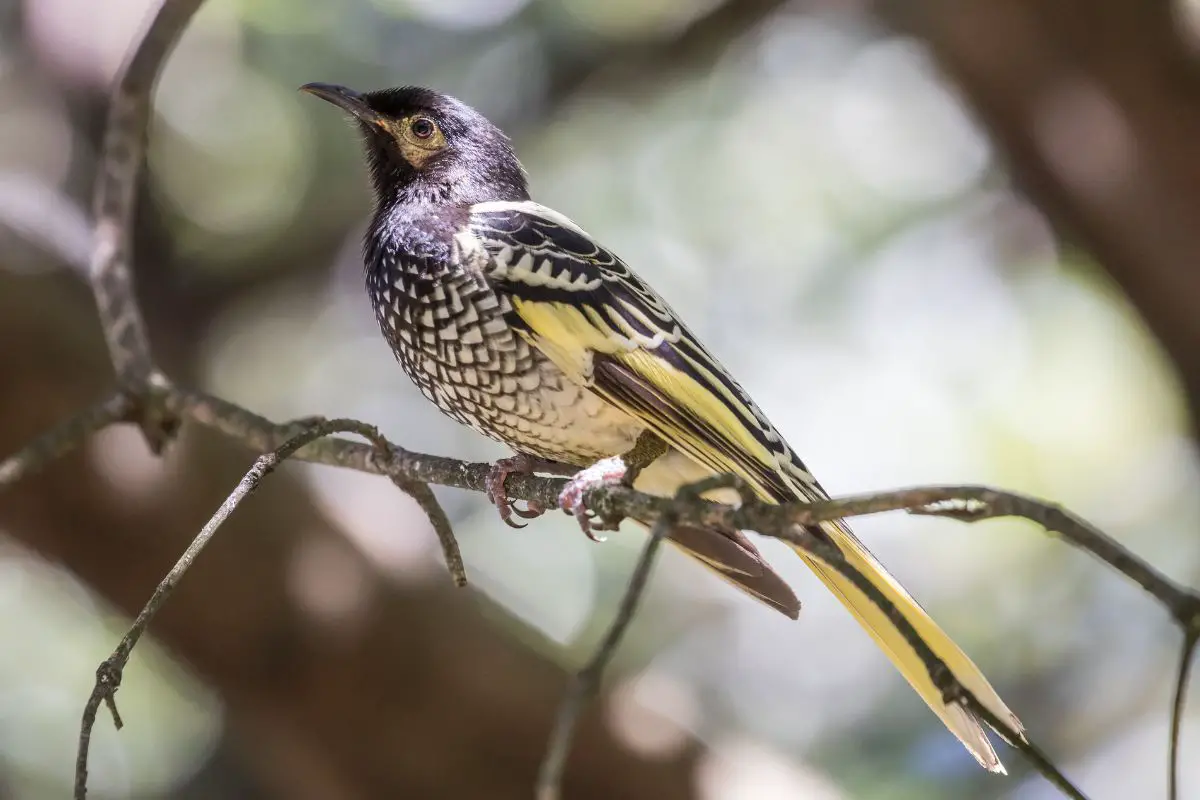
Size
Regent Honeyeaters measure between 20 and 24 cm (7.9-9.4 in.).
Colour
These are striking yellow and black birds. Their heads and necks are black and male birds like the one in the image above, have pale yellow bare skin around the eyes.
The feathers on their chests and backs are pale yellow edged with black and resemble scales. Brighter yellow patches adorn their wings and the underside of their tails.
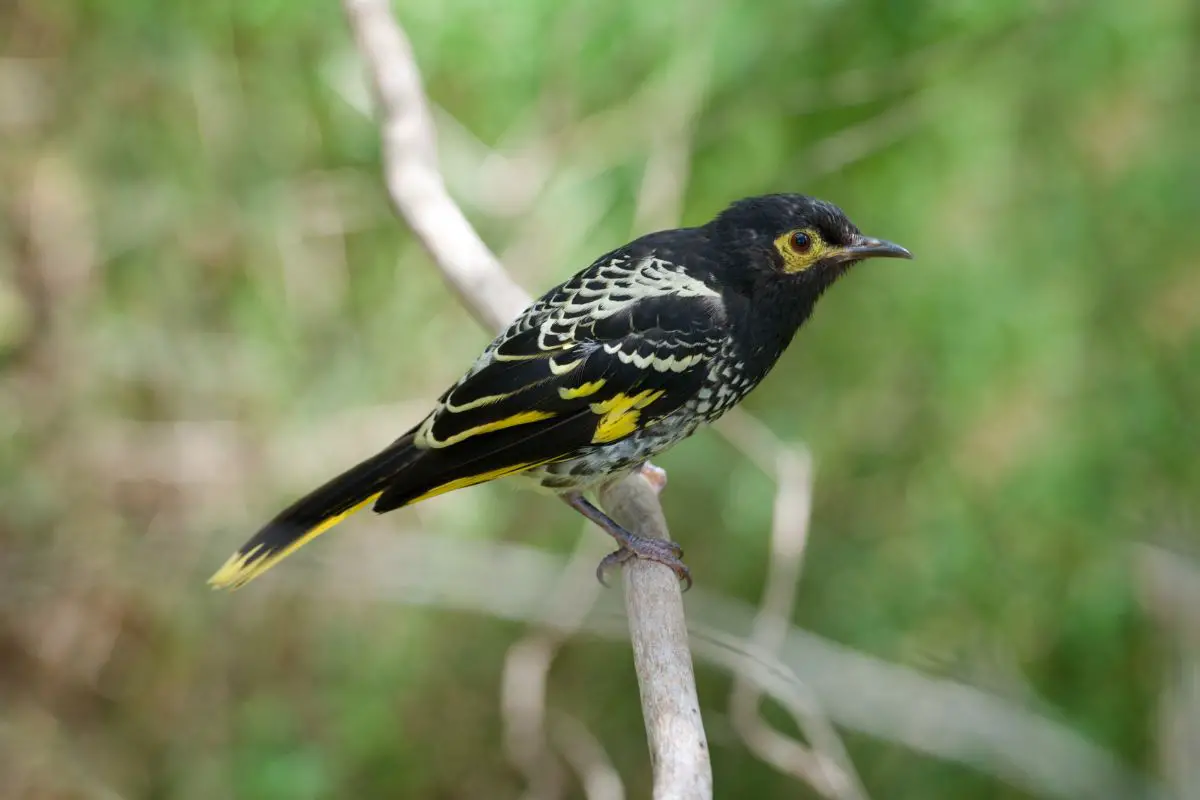
Other Names
Regent Honeyeaters do not seem to have alternative names. Their Latin name is Anthochaera phrygia.
Where To Find Them
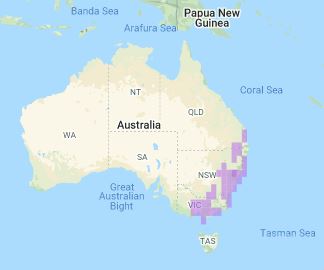
The Regent Honeyeater is found in the east and southeast of Australia, from Victoria north to NSW and in a few places in southern Queensland. They are most likely on the western slopes of the Great Dividing Range.
Where To Look For Them
Look for Regent Honeyeaters on the ground, in flowering trees and bushes, and also flying about catching insects on the wing. Being honeyeaters, they like nectar from flowers and will bathe in puddles or pools on the ground.
What Do They Sound Like?
When I came across this call I became very excited, both because the Regent Honeyeater call is amazing and also because this was recorded in Woolgoolga, only a 5-minute drive from where I live!
Explore some of the fish-eating birds of Australia in this post right here on Birdwatch World
8. Regent Parrot
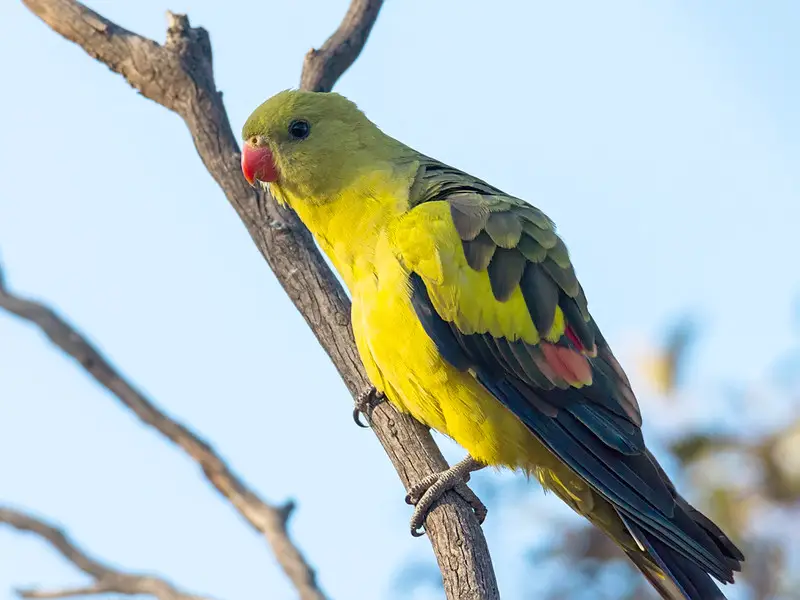
Size
The Regent Parrot is the largest bird we’re looking at in this article, measuring around 37–42 cm (14.5-16.5 in.).
Colour
As you can see in the image above, the Regent Parrot is a stunning bird. It is mostly yellow with blue-black wings and tail. A red patch stands out on its wings and it also has a bright yellow patch on its shoulders.
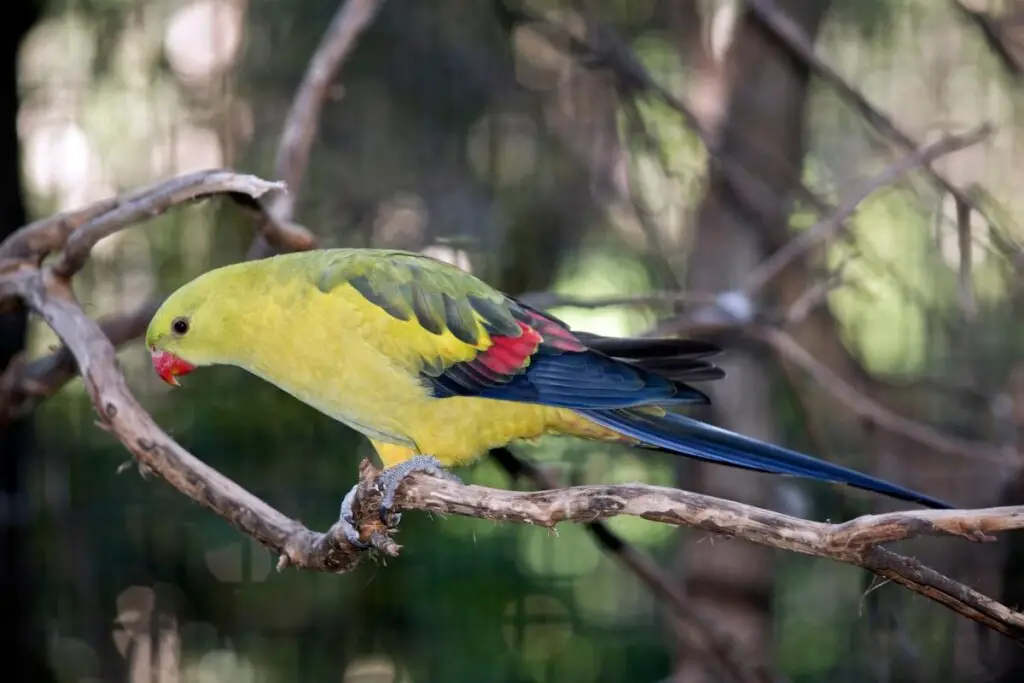
Other Names
This parrot has many names, including Rock Pebbler, Black-tailed Parrot, Marlock Parrot, Black-throated Parrot (why I don’t know?!), and Smoker.
Where To Find Them
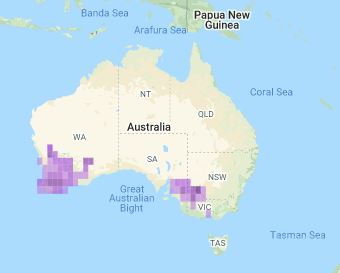
Regent Parrots can be found in the southwest corner of Western Australia, and also in the southeast of South Australia, and in the top western corner of Victoria.
Where To Look For Them
Look for Regent Parrots foraging in pairs or groups, eating seeds, buds, flowers, and insect larvae among other things. You will likely see them on the ground but also in the tree canopy. They also love grains such as wheat and may be found on the roadside eating spilled grains.
What Do They Sound Like?
Listen to the Regent Parrot’s call below:
9. Yellow-tufted Honeyeater
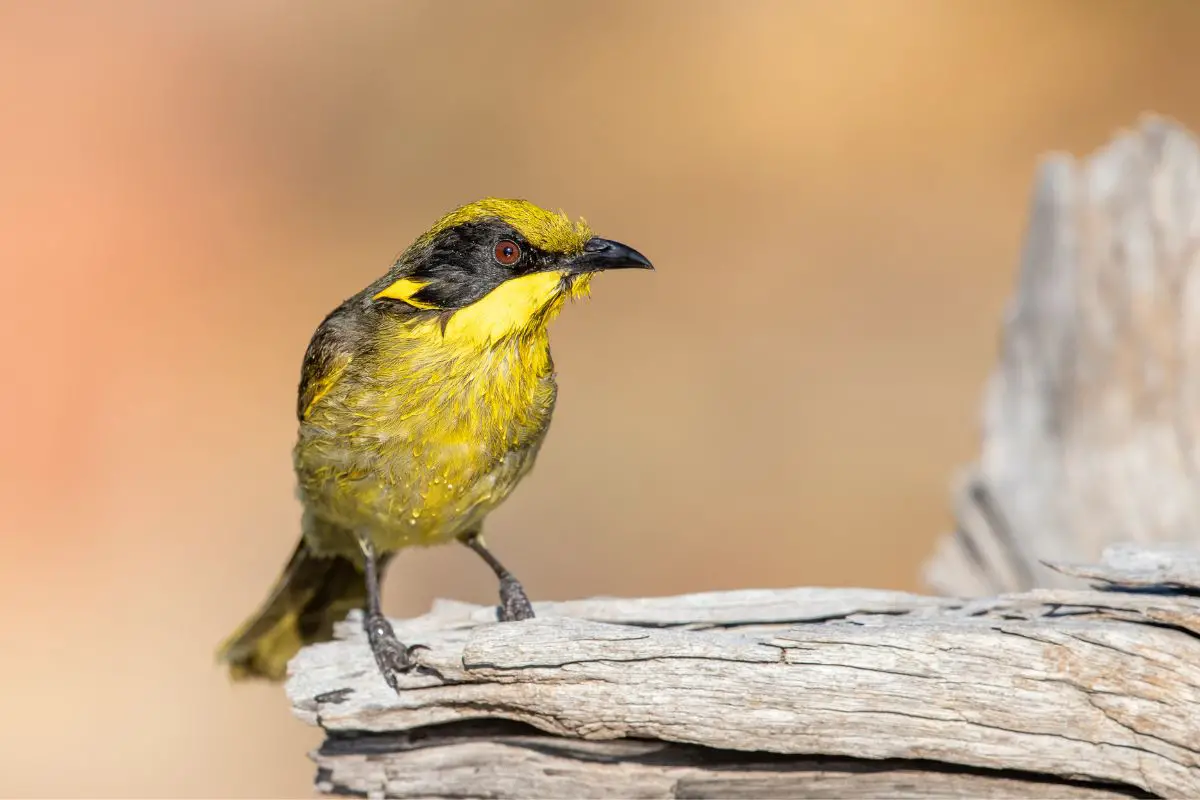
Size
The Yellow-tufted Honeyeater is between 17 and 23 cm (6.7–9.1 in) long.
Colour
A beautiful bird that is olive-brown on its upper parts and yellowish-grey underneath. They have a black mask around their eyes, brilliant yellow tufts on the sides of their heads, and bright yellow on the sides of their throats.
There are three subspecies of this bird, one of which is the Helmeted Honeyeater, an endangered species that is only found in Yellingbo in Victoria.
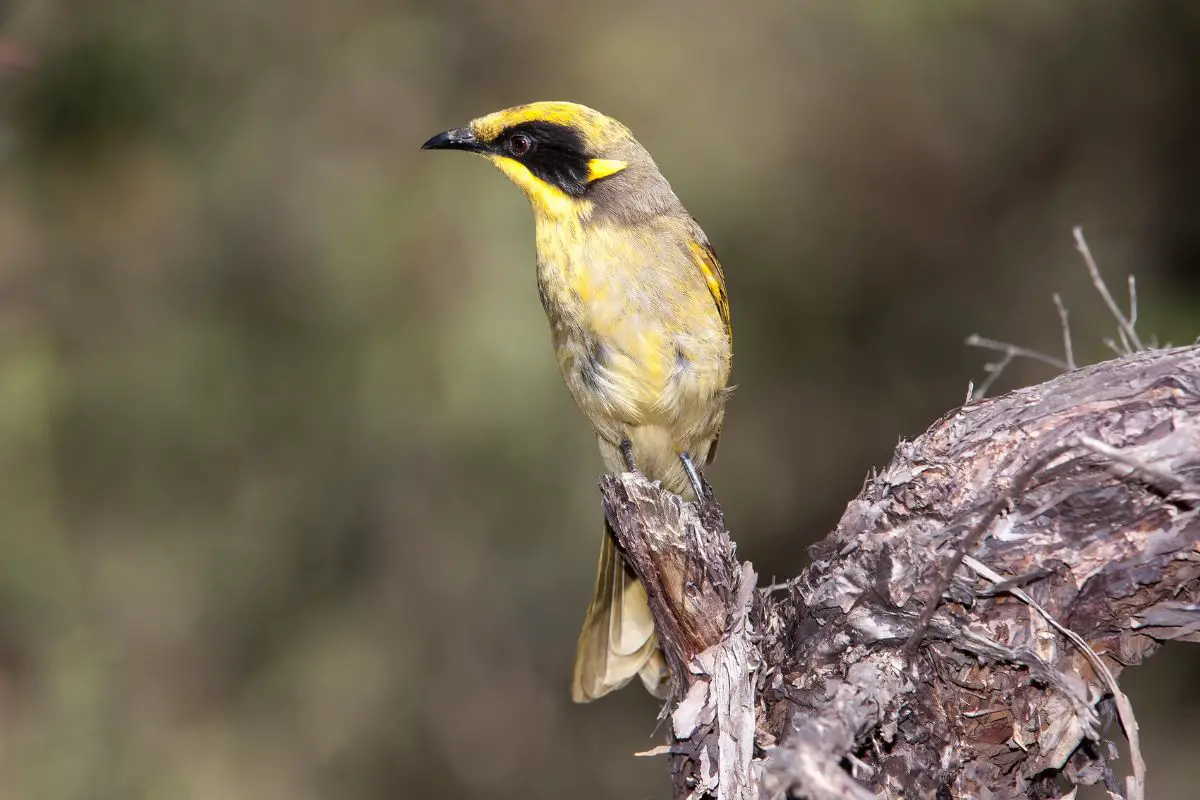
Other Names
Yellow-tufted Honeyeaters are not known by any other names. Their Latin name is Lichenostomus melanops.
Where To Find Them
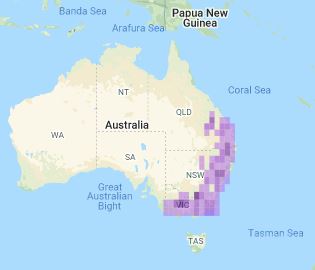
Yellow-tufted Honeyeaters are found in the east of Australia from the Tropic Of Capricorn in Queensland south to eastern Victoria and across to western Victoria.
Can you get paid to watch birds? The answer in this post here on the blog will surprise you
Where To Look For Them
Look for the stunning yellow of these birds in the tree canopy or in shrubs where they will feed on nectar from Eucalypt flowers and insects.
They feed alone, in pairs, or in groups of up to ten birds.
What Do They Sound Like?
Listen out for Yellow-tufted Honeyeaters making the sound below:
References
- Bird information sourced from – birdlife.org.au
- Additional bird information – Wikipedia
- Range maps sourced from – ebird.org
- Desert nomads: 4 things you didn’t know about budgies – Australian Geographic
- All bird audio recordings – xeno-canto.org
